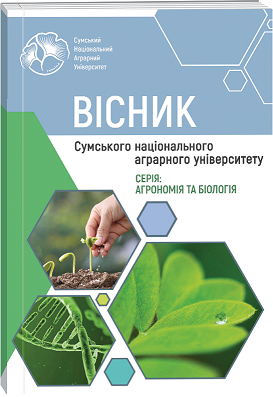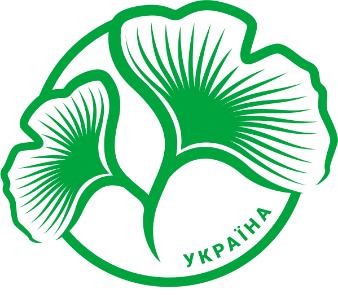CELLULAR MECHANISMS OF RESISTANCE TO THE SYNOPSIS TO THE PARASITE OROBANCHE CUMANA WALLR.
Abstract
The process of infection of different sunflower hybrids with different resistance to the parasite by Orobanche сumana was studied to evaluate the cellular mechanisms of resistance. The results obtained indicate that all sunflower hybrids were affected by the pathogen. However, the degree of infection with sunflower broomrape was different and depended on the unequal resistance of the hybrids. No sunflower hybrids with complete immunity to Orobanche cumana were found. When infected with broomrape, the resistance response of sunflower hybrids did not occur at the early stages of the parasite's life cycle: before attachment, after germination and attachment to roots (before the formation of haustoria) and after the formation of haustoria. In the discussion, the cellular mechanisms of sunflower resistance to the parasite are analyzed. The molecular genetic aspects of plant innate immunity are characterized. The molecular bases of plant resistance to pathogens are generalized. New effective approaches for controlling the parasite Orobanche cumana in sunflower are outlined. The elucidation of certain molecular genetic mechanisms of resistance of different hybrids to the pathogen opens a new promising direction in reducing the infection of hybrids by the parasite through the induction of systemic acquired resistance (SAR) by drugs that cause the formation of reactive oxygen species and trigger plant defense responses through programmed cell death at the sites of infection and cause pathogen necrosis. In this context, the directions of searching for new promising chemicals that can be used to develop biological herbicides and fungicides that are inducers of systemic resistance to control the pathogen are presented. Promising compounds that induce ROS signaling systems and trigger priming of defense responses and induce systemic resistance against pathogens for the treatment of viral, bacterial and phytoplasmic diseases and control of parasitic plants that are difficult to control by traditional chemical methods are considered.
References
2. Al-Khayri, J.M., Rashmi, R., Toppo, V., Chole, P.B., Banadka, A., Sudheer, W.N., Nagella, P., Shehata, W.F., Al-Mssallem, M.Q., Alessa, F.M., Almaghasla, M.I., & Rezk, A.A. (2023). Plant Secondary Metabolites: The Weapons for Biotic Stress Management. Metabolites, 13(6), 716. doi: 10.3390/metabo13060716.
3. Andersen, E.J., Ali, S., Byamukama, E., Yen, Y., & Nepal, M.P. (2018). Disease Resistance Mechanisms in Plants. Genes (Basel), 9(7), 339. doi: 10.3390/genes9070339.
4. Bandaranayake, P.C., Tomilov, A., Tomilova, N.B., Ngo, Q.A., Wickett, N., dePamphilis, C.W., & Yoder, J.I. (2012). The TvPirin gene is necessary for haustorium development in the parasitic plant Triphysaria versicolor. Plant Physiol, 158(2), 1046-53. doi: 10.1104/pp.111.186858.
5. Besserer, A., Puech-Pagès, V., Kiefer, P., Gomez-Roldan, V., Jauneau, A., Roy, S., Portais, J.C., Roux, C., Bécard, G., & Séjalon-Delmas, N. (2006). Strigolactones stimulate arbuscular mycorrhizal fungi by activating mitochondria. PLoS Biol, 4(7), e226. doi: 10.1371/journal.pbio.0040226.
6. Calderan-Rodrigues, M.J., Guimarães Fonseca, J., de Moraes, F.E., Vaz Setem, L., Carmanhanis Begossi, A., & Labate, C.A. (2019). Plant Cell Wall Proteomics: A Focus on Monocot Species, Brachypodium distachyon, Saccharum spp. And Oryza sativa. Int. J. Mol. Sci, 20, 1975. doi:10.3390/ijms20081975.
7. Cartry, D., Steinberg, C. & Gibot-Leclerc, S. (2021). Main drivers of broomrape regulation. A review. Agron. Sustain. Dev, 41, 17. doi:10.1007/s13593-021-00669-0 .
8. Conn, C.E. & Nelson D.C. (2016). Evidence that KARRIKIN-INSENSITIVE2 (KAI2) Receptors may Perceive an Unknown Signal that is not Karrikin or Strigolactone. Front. Plant Sci, 6, 1219. doi:10.3389/fpls.2015.01219.
9. Cvejić, S., Radanović, A., Dedić, B., Jocković, M., Jocić, S., & Miladinović, D. (2020). Genetic and Genomic Tools in Sunflower Breeding for Broomrape Resistance. Genes (Basel), 11(2), 152. doi: 10.3390/genes11020152.
10. Dana, S., Tadmor, Y., Plakhine, D., Ziadna, H., Hübner, S., & Eizenberg, H. (2021). «Biological and Transcriptomic Characterization of Pre-Haustorial Resistance to Sunflower Broomrape (Orobanche cumana W.) in Sunflowers (Helianthus annuus)» Plants 10, 9, 1810. doi:10.3390/plants10091810.
11. Daniel, M. J. & Losner-Goshen, D. (1994). The attachment organ of the parasitic angiosperms Orobanche cumana and O. aegyptiaca and its development. Canadian Journal of Botany, 72(5), 564–574. doi:10.1139/b94-075
12. Doehlemann, G., & Hemetsberger, C. (2013). Apoplastic immunity and its suppression by filamentous plant pathogens. New Phytol, 198(4), 1001-1016. doi:10.1111/nph.12277.
13. Duriez, P., Vautrin, S., Auriac, M.C., Bazerque, J., Boniface, M.C., Callot, C., Carrère, S., Cauet, S., Chabaud, M., Gentou, F., Lopez-Sendon, M., Paris, C., Pegot-Espagnet, P., Rousseaux, J.C., Pérez-Vich, B., Velasco, L., Bergès, H., Piquemal, J., & Muños, S. (2019). A receptor-like kinase enhances sunflower resistance to Orobanche cumana. Nat Plants, 5(12), 1211–1215. doi: 10.1038/s41477-019-0556-z.
14. Echevarría-Zomeño, S., Pérez-de-Luque, A., Jorrín, J., & Maldonado, A. M. (2006). Prehaustorial resistance to broomrape (Orobanche cumana) in sunflower (Helianthus annuus): cytochemical studies, Journal of Experimental Botany, 57, 4189–4200. doi:10.1093/jxb/erl195.
15. Fernández-Aparicio, M., del Moral, L., Muños, S. et al. (2022). Genetic and physiological characterization of sunflower resistance provided by the wild-derived OrDeb2 gene against highly virulent races of Orobanche cumana Wallr. Theor Appl Genet, 135, 501–525. doi:10.1007/s00122-021-03979-9 .
16. Fernández-Aparicio, M., Reboud, X. & Gibot-Leclerc, S. (2016). Broomrape Weeds. Underground Mechanisms of Parasitism and Associated Strategies for their Control: A Review. Front. Plant Sci, 7, 135. doi: 10.3389/fpls.2016.00135.
17. Fernández-Melero, B., del Moral, L., & Todesco, M. (2024). Development and characterization of a new sunflower source of resistance to race G of Orobanche cumana Wallr. derived from Helianthus anomalus. Theor Appl Genet, 137, 56. doi:10.1007/s00122-024-04558-4.
18. Frąckowiak, P., Pospieszny, H., Smiglak, M., Obrępalska-Stęplowska, A. (2019). Assessment of the Efficacy and Mode of Action of Benzo(1,2,3)-Thiadiazole-7-Carbothioic Acid S-Methyl Ester (BTH) and Its Derivatives in Plant Protection Against Viral Disease. Int J Mol Sci, 20(7), 1598. doi: 10.3390/ijms20071598.
19. Furuta, K. M., Xiang, L., Cui, S., & Yoshida, S., (2021). Molecular dissection of haustorium development in Orobanchaceae parasitic plants, Plant Physiology, 186, 1424–1434. doi:10.1093/plphys/kiab153.
20. Hosni, T., Abbes, Z., & Abaza, L. (2020). Effect of broomrape (Orobanche cumana Wallr.) on some agromorphological and biochemical traits of Tunisian and some reference sunflower (Helianthus annuus L.) accessions. J Plant Dis Prot, 127, 831–841. doi:10.1007/s41348-020-00362-6.
21. Kaundun, S.S., Martin-Sanz, A., Rodríguez, M., Serbanoiu, T., Moreno, J., Mcindoe, E. & le Goupil, G. (2024). First case of evolved herbicide resistance in the holoparasite sunflower broomrape, Orobanche cumana Wallr. Front. Plant Sci, 15, 1420009. doi: 10.3389/fpls.2024.1420009 .
22. Khablak, S.G., Abdullaeva, Y.A., & Ryabovol, L.O. (2018). Sensitivity of sunflower hybrids to new races of Broomrape. Factors of Experimental Evolution of Organisms, 23, 55–57.
23. Khan, M., Ali, S., Al Azzawi, TNI, Saqib, S., Ullah, F., Ayaz, A., & Zaman, W. (2023). The Key Roles of ROS and RNS as a Signaling Molecule in Plant-Microbe Interactions. Antioxidants (Basel), 12(2), 268. doi: 10.3390/antiox12020268.
24. Kukin, V. F. (1960). Method of evaluation of sunflower for resistance to infestation. Plant protection from pests and diseases, 7, 39.
25. Labrousse, P., Arnaud, M.C., Griveau, Y., Fer, A., & Thalouarn, P. (2004). Analysis of resistance criteria of sunflower recombined inbred lines against Orobanche cumana Wallr., Crop Protection, 23, 407–413. doi:10.1016/j.cropro.2003.09.013.
26. Le Ru, A., Ibarcq, G., & Boniface, M.C. (2021). Image analysis for the automatic phenotyping of Orobanche cumana tubercles on sunflower roots. Plant Methods, 17, 80. doi:10.1186/s13007-021-00779-6
27. Louarn, J., Boniface, M-C., Pouilly, N., Velasco, L., Pérez-Vich, B., Vincourt, P. & Muños, S. (2016). Sunflower Resistance to Broomrape (Orobanche cumana) Is Controlled by Specific QTLs for Different Parasitism Stages. Front. Plant Sci, 7, 590. doi: 10.3389/fpls.2016.00590.
28. Lozano-Baena, M. D., Prats, E., Moreno, M. T., Rubiales, D., & Pérez-de-Luque, A. (2007). Medicago truncatula as a Model for Nonhost Resistance in Legume-Parasitic Plant Interactions. Plant Physiology, 2, 437–449. doi:10.1104/pp.107.097089.
29. Martín-Sanz, A., Malek, J., Fernández-Martínez, J.M., Pérez-Vich. B., & Velasco, L. (2016). Increased virulence in sunflower broomrape (Orobanche cumana Wallr.) populations from Southern Spain is associated with greater genetic diversity. Front Plant Sci, 7, 589. doi:10.3389/fpls.2016.00589.
30. Maruta, N., Burdett, H., Lim, B.Y.J., Hu, X., Desa, S., Manik, M.K., & Kobe, B. (2022). Structural basis of NLR activation and innate immune signalling in plants. Immunogenetics, 74(1), 5–26. doi: 10.1007/s00251-021-01242-5.
31. Nawu, Y., Matthew, M. A. and Yao, C. (2023). «Roles of Cysteine Proteases in Biology and Pathogenesis of Parasites»Microorganisms 11, 6, 1397. doi.org/10.3390/microorganisms11061397
32. Netea, M.G., Van der Graaf, C., Van der Meer, J.W., & Kullberg, B.J. (2004). Toll-like receptors and the host defense against microbial pathogens: bringing specificity to the innate-immune system. J Leukoc Biol, 75(5), 749-55. doi: 10.1189/jlb.1103543.
33. Pérez-de-luque, A., Rubiales, D., Cubero, J. I., Press, M. C., Scholes, J., Yoneyama, K., Takeuchi, Y., Plakhine, D., & Joel, D. M. (2005). Interaction between Orobanche crenata and its Host Legumes: Unsuccessful Haustorial Penetration and Necrosis of the Developing Parasite, Annals of Botany, 95, 935–942. doi.org/10.1093/aob/mci105.
34. Richmond, B.L., Coelho, C.L., Wilkinson, H., McKenna, J., Ratchinski, P., Schwarze, M., Frost, M., Lagunas, B., & Gifford, M.L. (2022). Elucidating connections between the strigolactone biosynthesis pathway, flavonoid production and root system architecture in Arabidopsis thaliana. Physiol Plant, 174(2), e13681. doi: 10.1111/ppl.13681.
35. Sanabria, N.M., Huang, J.C., & Dubery, I.A. (2010). Self/nonself perception in plants in innate immunity and defense. Self Nonself, 1(1), 40–54. doi: 10.4161/self.1.1.10442.
36. Serghini, K., Pérez de Luque, A., Castejón-Muñoz, M., García-Torres, L., & Jorrín J, V. (2001). Sunflower (Helianthus annuus L.) response to broomrape (Orobanche cernua Loefl.) parasitism: induced synthesis and excretion of 7-hydroxylated simple coumarins, Journal of Experimental Botany, 52, 2227–2234. doi:10.1093/jexbot/52.364.2227.
37. Wan, J., He, M., & Hou, Q. (2021). Cell wall associated immunity in plants. Stress Biology, 1, 3. doi:10.1007/s44154-021-00003-4.
38. Wolf, S., Hématy, K., & Höfte, H. (2012). Growth control and cell wall signaling in plants. Annu Rev Plant Biol, 63, 381-407. doi: 10.1146/annurev-arplant-042811-105449.
39. Yang, C., Liu, R., Pang, J., Ren, B., Zhou, H., Wang, G., Wang, E., & Liu, J. (2021). Poaceae-specific cell wallderived oligosaccharides activate plant immunity via OsCERK1 during Magnaporthe oryzae infection in rice. Nat Commun, 12(1), 2178. doi: 10.1038/s41467-021-22456-x.
40. Yang, C., Xu, L., Zhang, N., Islam, F., Song, W., Hu, L., Liu, D., Xie, X., & Zhou, W. (2017). iTRAQ-based proteomics of sunflower cultivars differing in resistance to parasitic weed Orobanche cumana. Proteomics, 17. doi:10.1002/pmic.201700009.
41. Zhang, Y., Su, J., Yun, X., Wu, W., Wei, S., Huang, Z., & Huang, H. (2022). Molecular mechanism of the parasitic interaction between Orobanche cumana wallr. and sunflowers. Journal of Plant Interactions, 17(1), 549–561. doi:10.1080/17429145.2022.2062061.

 ISSN
ISSN  ISSN
ISSN 



